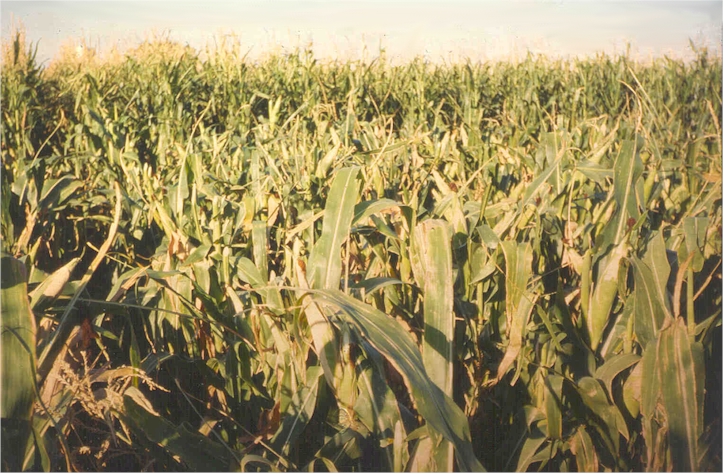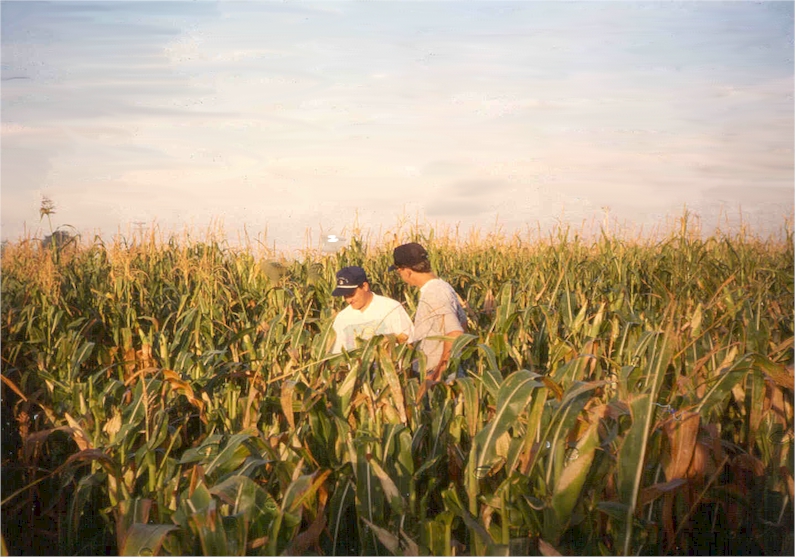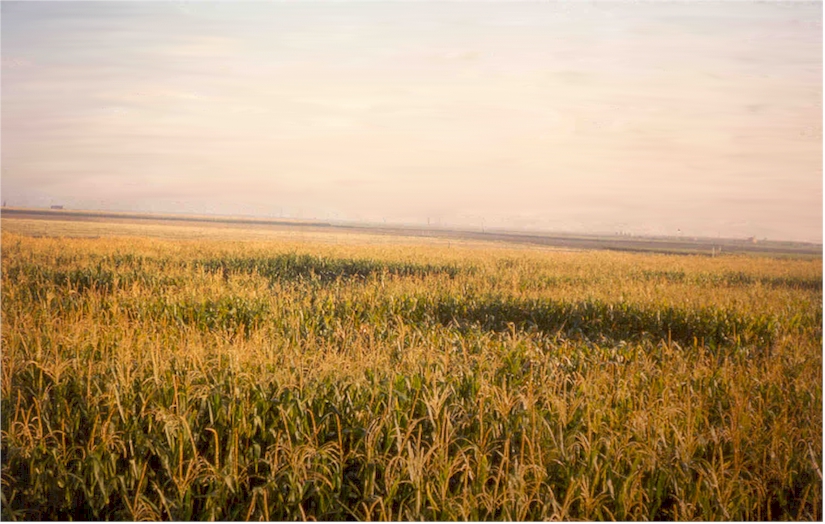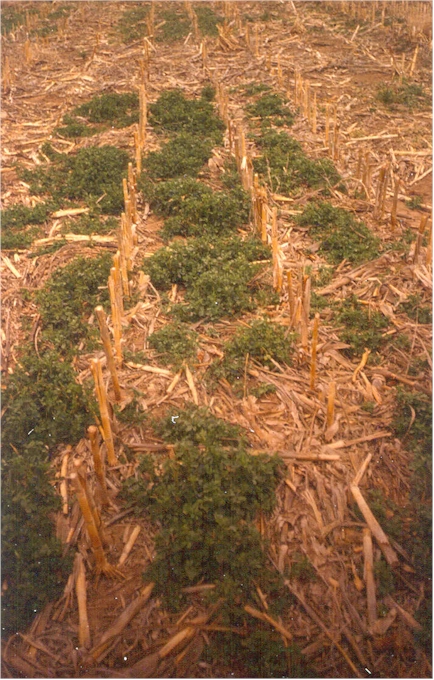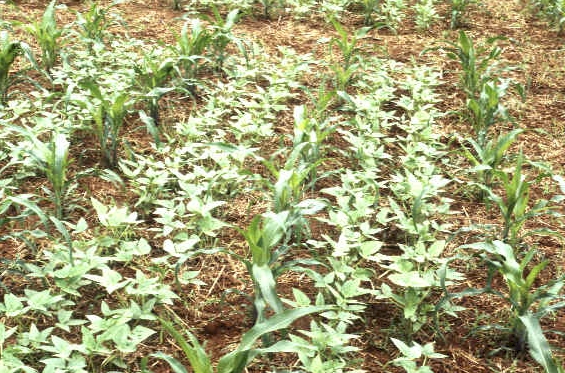| Canopy Reduction |
| Humphreys, M.T., K.W. Freeman, R.W. Mullen, D.A. Keahey, R.K. Teal, and W.R.Raun. 2003. Canopy reduction and legume interseeding in irrigated continuous corn. J. Plant. Nutr. 26:1335-1343. |
|
1. In late-summer, early fall
(physiological maturity), the top of the corn plant, just above the ear
is cut off. This would technically be mechanized using a high-boy
sickle bar presently used in to remove corn tassels, only somewhat
lower.
2. Immediately prior to removing the corn canopies, legumes would be broadcast in front of the sickle bar, such that the seed would reach the soil surface and immediately covered by the moist corn leaves/stalks cut just above the ear. 3. The interseeded legume is then allowed to grow during late fall, winter and early spring. 4. In early spring, prior to planting, corn stalks and the legumes are incorporated prior to planting.
|
| In Panama, legume species such as Vigna unguiculata are interseeded with corn at the time of planting. The cowpeas are harvested within 60-70 days and the corn plants allowed to reach maturity 30-40 days later. |
|
In El Salvador, vigna is interseeded just prior to flowering in corn. Using this method, both corn and cowpeas are harvested within the same time period. Both of these methods are aimed at covering the soil (between corn rows) in an attempt to decrease soil erosion during the rainy season months.
|
